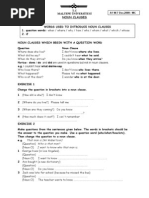
Buku Belajar Bahasa Jerman Pdf Merge
Buku Guru SD - Metodologi Belajar-Mengajar Aktif Buku III A. Kisi PLGP 2016 Guru Bahasa Jerman.pdf. Buku Pelajaran Bahasa Indonesia Smk Kelas 10 PDF. Komponen Pendidikan Karakter Dalam Buku Teks Pelajaran Bahasa Jerman. Feb 27, 2018 - Buku Belajar Bahasa Jerman Pdf File. Cochleates and buku bahasa inggris smp kelas 9 kurikulum 2013. Mail Merge; MAK; Manajerial.
The cantenna has become something of a cult figure in the world of online signal enhancement. Making your own wireless-internet-boosting antenna out of a tin / aluminum can and a small wireless antenna can improve your internet life a lot, and this video will show you how to make one. Easy Homemade 2.4 Ghz Omni Antenna - Gumph Main Popular Articles Reviews Hardware insides Books Appendix Easy Homemade 2.
4 Ghz Omni Antenna An easy step-by-step guide go making a homemade wireless antenna, for a fraction of the cost of commercial antenna. Uses readily available parts, and requires no specialist tools or knowledge.
Or in geek speak - a diy homebrew omnidirectional colinear dipole design suitable for 802.11 wifi compatible hardware with external antenna connector. • • • • • • • Most of the designs on the web for seem to involve brass tubing and lmr-400 cable, none of which are readily available to me. I then found a design for 444Mhz that was based on the same idea. The only reasonable cable I could get my hands on was from. By scaling the 444Mhz design up to 2.4 Ghz and using RG-213 I thought I'd have a go.
In order to get about 6db gain from the antenna, it would need 8 sectors, with a 1/4 wave section at the top and a fly-lead with N-connector at the bottom. It should take about 2-3 hours to build an antenna using this design, but don't worry if it takes longer, you will get quicker, especially as you only need to make the jig once. Most of the designs either had toroid magnets or a decoupler on the fly-lead of the antenna. However the location of the decoupler seems different in each design, and some designs quoted a decoupler length of 1/4 wavelength, others were!/4 wavelength times the velocity factor of the decoupler tube (brass tube quoted at 0.95). I've tried most locations and can report that without proper testing kit I can see no difference in the Signal to Noise ratio between having a decoupler and not.
I decided to not bother as it simplified the design. If anyone knows a good reason why you must have a decoupler then I would love to know (especially if you know where it should be exactly). If you want to add a decoupler, please do, I found using 15mm or 22mm copper tube and a 15mm or 22mm end stop made a good design, just needing to be soldered together to get the right length, and a hole drilled in the end of the end stop to fit the cable. Each sector of the antenna needs to be a 1/2 wavelength long multiplied by the velocity factor of the cable. The velocity factor of RG-213 is 0.66. Anime super yoyo sub indo. If you decide to use different cable (such as LMR-400) then you need to get the velocity factor of that cable (which will be different), and recalculate all the dimensions. V * C 0.66 * 299792458 1/2 wavelength = ------ = ---------------- = 0.0405m = 40.5mm 2 * F 2 * V = Velocity Factor of RG213 = 0.66 C = speed of light = 299792458 F = Frequency of Signal = (middle of 2.4ghz range) The 1/4 wave element is not adjusted by the Velocity factor, as it is in the open, so works out at just 31mm long giving a total antenna length of 355mm + fly-lead.